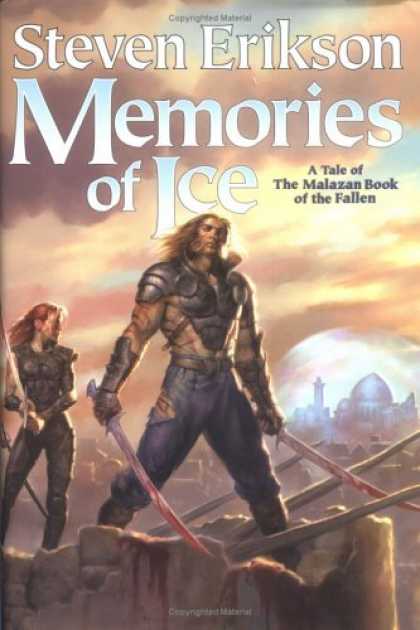The City and The City (2009) by China Mieville was one of two novels that shared the hallowed Hugo Award for best science fiction novel in 2010 (due to a voting tie). It also won a slew of other literary awards, including the World Fantasy Award. Being a huge fan of Mieville and a Hugo Award fanboy, I was really looking forward to digging into this one! The City and The City turns out to be an intriguing, thoughtful novel about how we are trained to view the world around us and what effects it can have.
The novel revolves around two fictional cities located somewhere in eastern Europe: Beszel and Ul Qoma. Tyador Borlu of the Extreme Crime Squad is called to investigate the murder of a visiting foreign student found dead in the Beszel streets. The novel follows his investigation as it unravels into something entirely more sinister than it at first seemed.
So far, it sounds like it could be the beginning to just about any old detective novel, but here's the Mieville twist that makes it so brilliant: Beszel and Ul Qoma actually share the same geographic space. And it turns out that the two cities aren't exactly friendly toward each other. In fact, the citizens of the two cities actively work to "unsee" people and places in the other city. Unseeing is a mental process whereby people, places, and events in the other city are ignored. The act is ingrained in every citizen from birth and held in place by threat of a mysterious force known as "breach" that actively works to ensure the two cities remain divided. "Breaching," whereby a citizen of one city ignores the separation between the cities, is considered the most heinous of crimes and is dealt with harshly.
Their isolation from one another has led both cities to develop a distinct culture with differences in dress, language, and architecture despite overlapping in geographic space. As a consequence, Beszel and Ul Qoma are divided into areas that are either total (completely in one city), alter (completely in the other city), or crosshatched (shared by both cities where active unseeing is necessary to avoid breach). Citizens must be aware at all times of where they are and what they should be seeing. Fascinating, huh?
Their isolation from one another has led both cities to develop a distinct culture with differences in dress, language, and architecture despite overlapping in geographic space. As a consequence, Beszel and Ul Qoma are divided into areas that are either total (completely in one city), alter (completely in the other city), or crosshatched (shared by both cities where active unseeing is necessary to avoid breach). Citizens must be aware at all times of where they are and what they should be seeing. Fascinating, huh?
I've said before that books that really make me consider the world around me or my place within it are those that I consider some of the best. Well, to say that The City and The City is thought-provoking is, perhaps, an understatement. In fact, I've come to think of it as Mieville's grand thought experiment. It takes something that we all do (i.e. "tune out" parts of the world around us) to the logical extreme, and, in the process, asks us to consider the causes and consequences of our behavior. Really great stuff!
(Look for a review of the other 2010 Hugo best novel winner, The Windup Girl by Paolo Bacigalupi, soon!)















